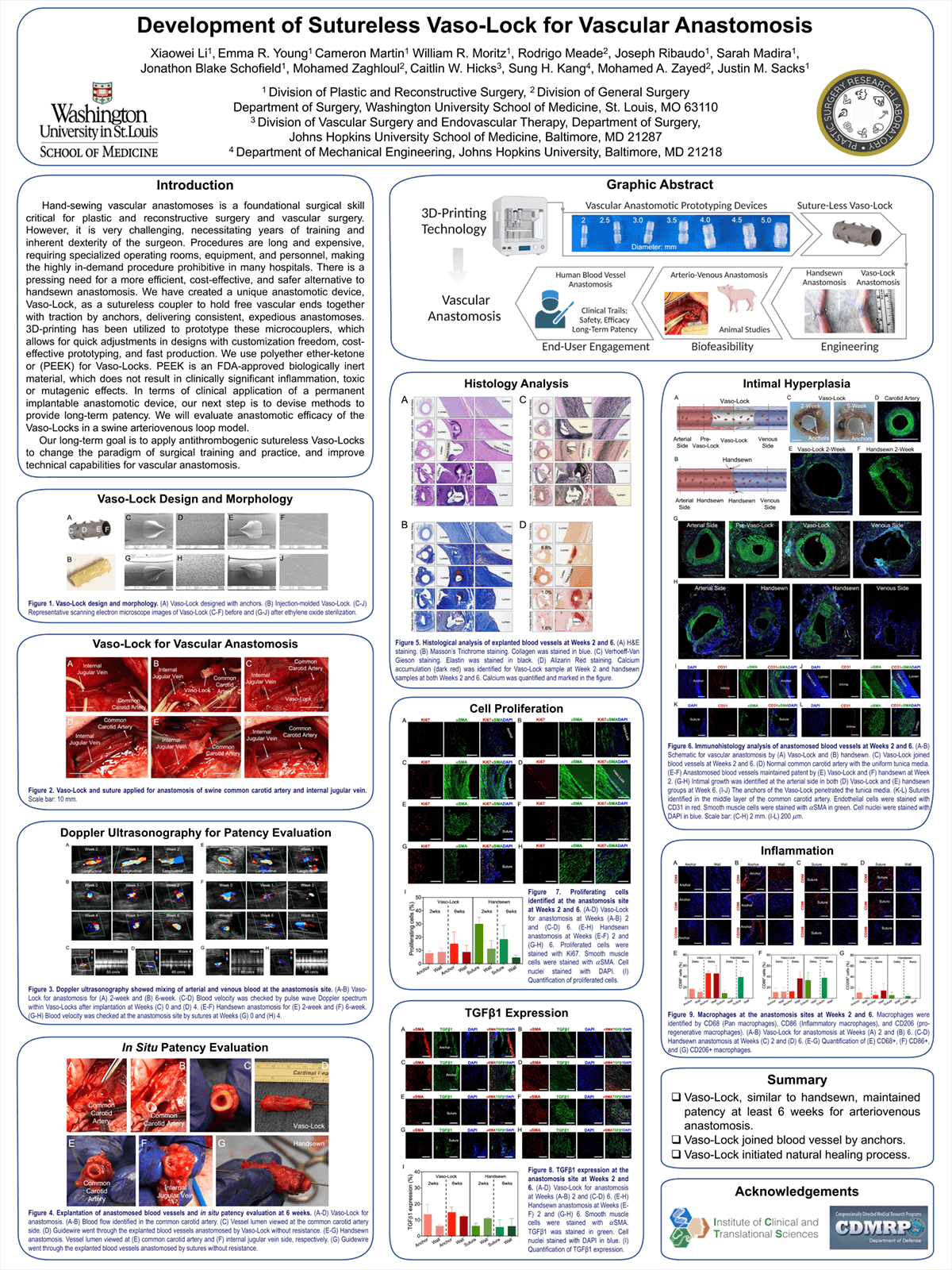
Introduction: Micro- and macrovascular anastomoses involve suturing together of blood vessels, which is a critical foundational surgical skill. However, it faces many challenges, such as decade-long training and inherent dexterity of the surgeon. Procedures are long and expensive, require specialized operating rooms and equipment, making them prohibitive in many hospitals. Our team has created a unique anastomotic device, Vaso-Lock, as a sutureless coupler. Vaso-Lock is intraluminal, holding free vessel ends together with traction by anchors. We aim to apply Vaso-Lock to change the paradigm of surgical training and practice, and improve technical capabilities for vascular anastomosis.
Methods: We have utilized 3D-printing to prototype Vaso-Locks with quick design adjustments. Vaso-Lock maintained its intact structure after ethylene oxide sterilization, which was evaluated by scanning electron microscope. Vaso-Lock was deployed in a porcine model for anastomosis of common carotid artery and internal jugular vein. Doppler ultrasound was used to longitudinally assess patency, blood flow velocities, and lumen preservation. Histological studies were performed to evaluate endothelialization and device-vessel interface biocompatibility.
Results: Vaso-Lock maintained anastomosis of common carotid artery to internal jugular vein in 3 porcine, with no evidence of leakage after deployment. Doppler ultrasonography demonstrated the mixture of arterial and venous blood inside the Vaso-Lock. During the extraction of Vaso-Lock, no blood clots were identified at the anastomosis site. Guidewire went through the explanted blood vessels anastomosed by the Vaso-Lock without resistance. All tissue sections with Vaso-Locks displayed open lumen at the anastomosis site. Inflammation cells, along with collagen bundles, appeared around anchors of the Vaso-Lock. Calcium was identified around the Vaso-Lock at 2-week. Intimal growth occurred under the Vaso-Lock at 6-week. We are evaluating surface-modified Vaso-Locks in terms of their long-term patency.
Impact: We believe our novel device can dramatically reduce operating time and complications so that surgical anastomotic techniques can be more widely used. Our unique device can be further scaled to other endoluminal anastomosis including ureter, fallopian tubes, biliary trees, and many more.
Organization: Washington University in St. Louis
Li X, Young ER, Martin C, Moritz WR, Meade R, Zaghloul M, Ribaudo J, Hicks CW, Kang SH, Zayed M, Sacks JM